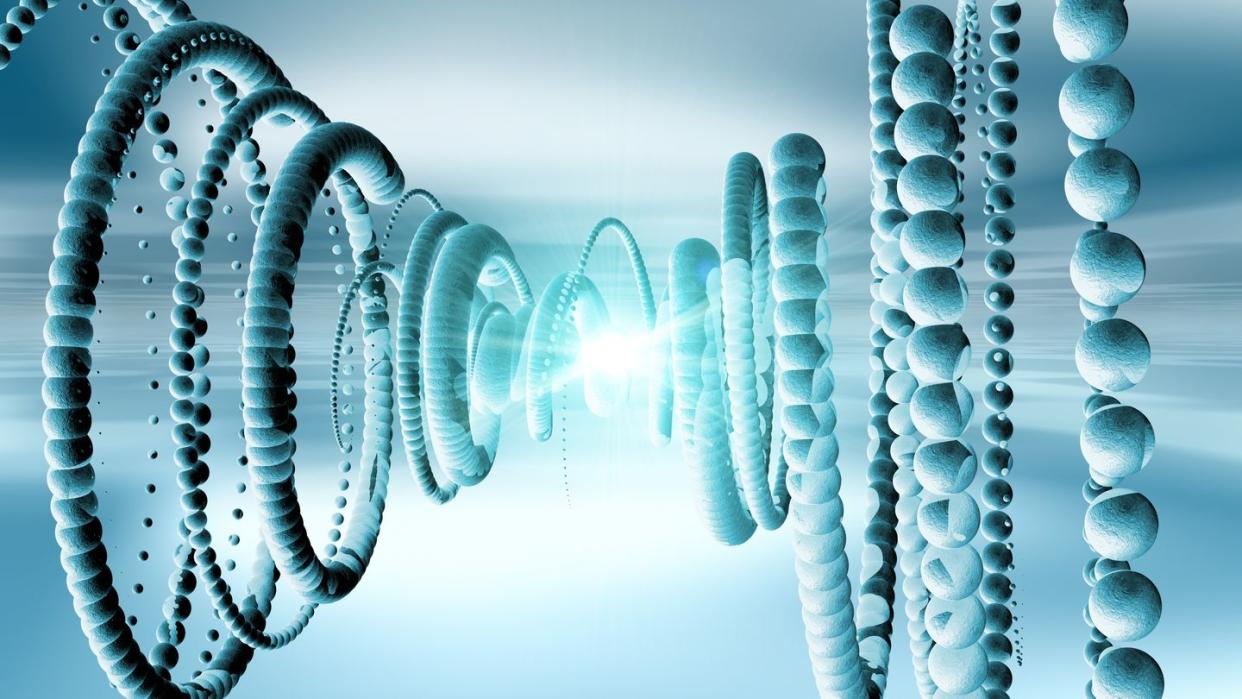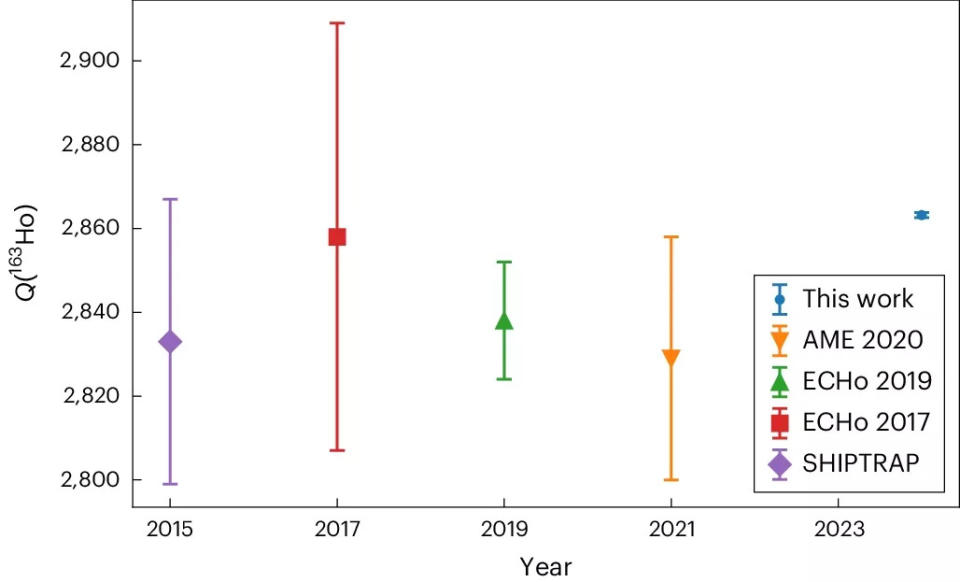It’s Really Freaking Hard to Weigh a Neutrino. Scientists Are Finally About to Do It.

"Hearst Magazines and Yahoo may earn commission or revenue on some items through these links."
Physicists have shone a light, so to speak, on a key missing value for neutrino mass.
The highly magnetic element holmium was trapped and subjected to mass spectrometry.
Reducing the range of the value known as the Q value range by a factor of 50 means a much narrower range for neutrino mass.
A group of scientists have recently dramatically improved their measurement of tiny, nearly massless neutrinos, improving the quality of results by a full 50 times. The large team used an instrument called PENTATRAP at the Max Planck Institute for Nuclear Physics in Germany. Neutrinos were once believed to be massless, and scientists have continued to work on how to observe their true massiveness—a funny word that, in context, simply means something has mass at all.
This experiment involved the element holmium, a rare earth metal that has a long-lived radioactive isotope, 163 holmium. Other scientists had previously suggested that this isotope would be a good candidate for studying electron capture as an analog to measuring neutrino mass. In electron capture, the heavier nucleus of an atom grabs one of its innermore electrons, which causes an electron neutrino to emerge from an atom that carries the energy “loosed” by this exchange.
Electron capture is a form of radioactive decay, where individual atoms come apart by radiating away their particles. The common types of radioactive decay are alpha, beta, and gamma decay, and electron capture is either a secret fourth thing or a subtype of beta decay (depending on who you ask). These actions take place in the nucleus, meaning they’re nuclear in nature.
So, when tasked with measuring or extrapolating the mass of a neutrino—something intrinsically linked here with a nuclear reaction—the scientists turned to something called the Q value. The Q value is a measurement of radioactive decay energy, produced by the reaction and measured by calorimetry (calorimetry is the process of gauging heat transfer created by chemical and physical reactions). And as one of the more concrete parameters in the measurement of neutrino mass, the Q value is important.

“An independently measured Q value for this process is vital for the assessment of systematic uncertainties in the neutrino mass determination,” the researchers wrote in their paper, published in Nature Physics. A more specific Q value range can reduce the overall variance in our idea of the mass of the neutrino. Imagine calculating your car’s average miles per tank of gas, but your miles per gallon number is somewhere between 15 and 45. If you could reduce the size of that window even by half, you would have a much better idea of your true gas milage.
So, how do you measure the energy produced by a single electron and its subsequent neutrino? Enter PENTATRAP, an instrument designed specifically for measuring the Q values of neutrino reactions. It’s a mass spectrometer, producing a readout of blips that indicate the ratios of mass to charge in the sample. Scientists then match the results to the shapes of known particles and molecules. PENTATRAP adds Penning traps, which are magnetic fields where charged particles can be held in place. There are five stacked Penning traps inside PENTATRAP—a name appropriately meaning “five.”
Since PENTATRAP was designed with finding a Q value for neutrino mass as one of its founding goals, it’s not surprising that the team behind this recent experiment was able to measure the Q value with a lot more precision than other facilities and research teams. But the results are dramatic even in that context. The PENTATRAP experiment resulted in a Q value range that’s 50 times more precise than previous measurements—in our gas mileage analogy, the “range” went from 25-50 miles down to 34-34.5.
“This will enable the determination of the electron neutrino mass on a sub-electronvolt level from the analysis of the electron capture in [163 holmium],” the research team concluded. (An electronvolt is a measure of charge of a single electron.) Certainly a step in the right direction.
You Might Also Like

